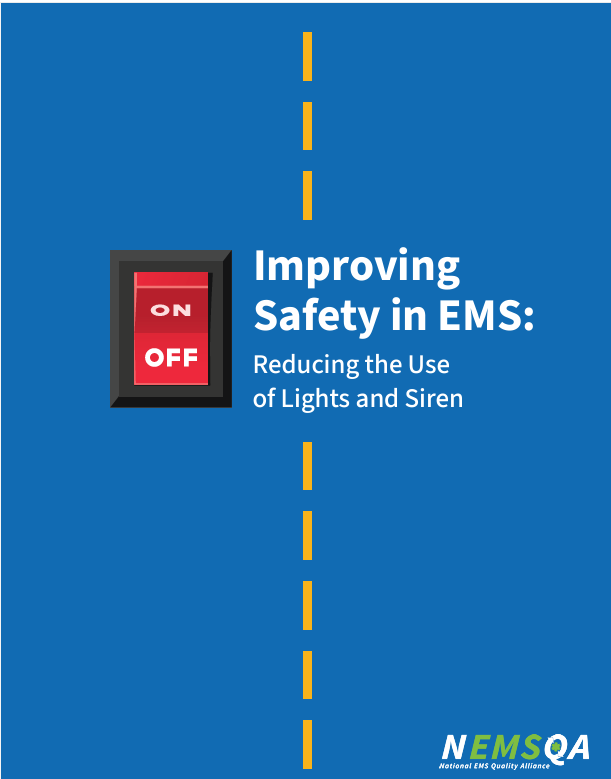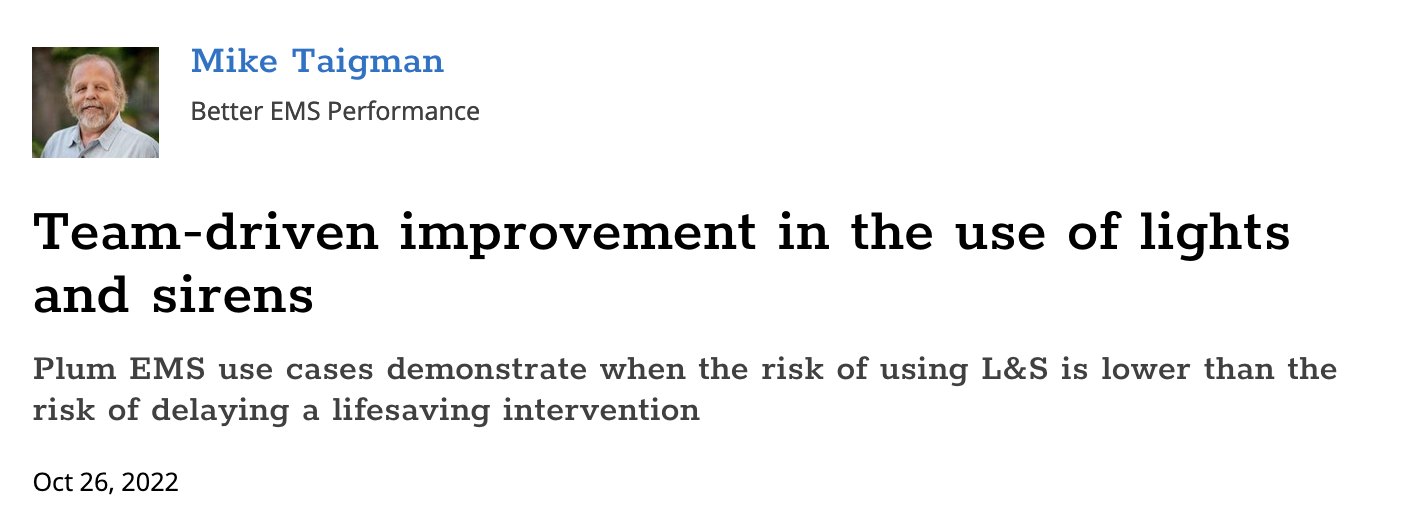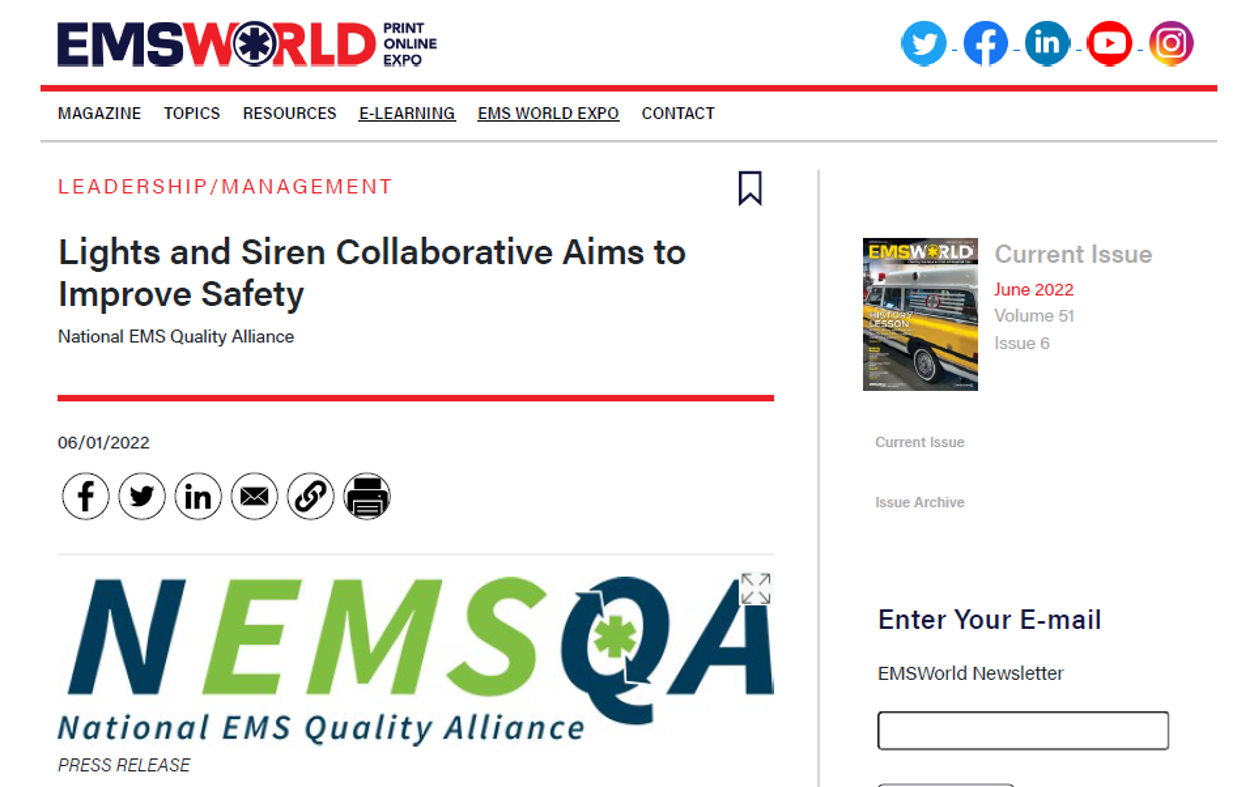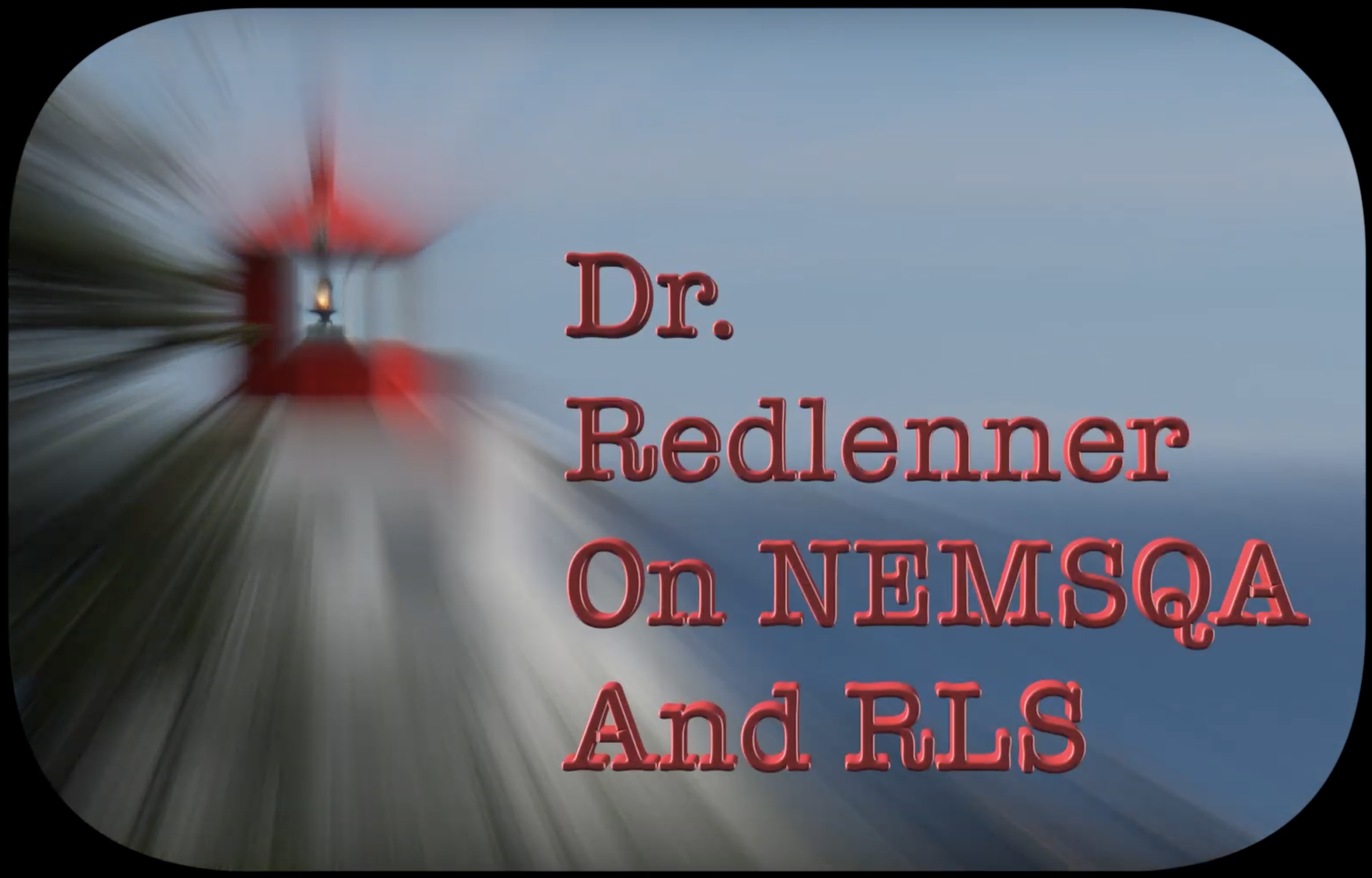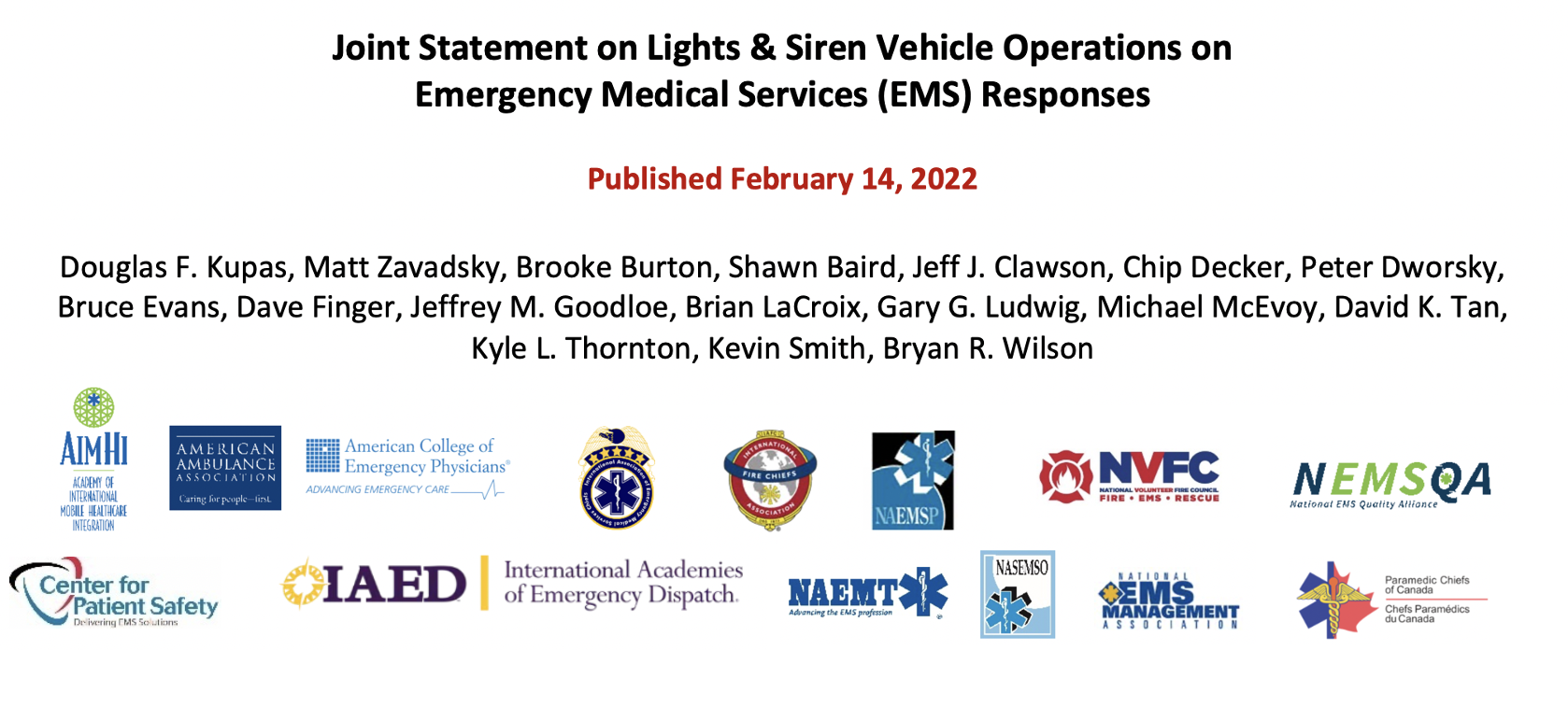Lights and Siren CollaborativeThe Lights and Siren Collaborative brought together a group of EMS organizations, subject-matter experts, and EMS agencies from across the US to prevent ambulance crashes by reducing the use of lights and siren (L&S) while driving. The Collaborative supported 50 EMS agencies nationwide as they implement improvements focused on NEMSQA's Safety-01 and Safety-02 Measures: Use of Lights and Siren During Response/Transport. The collaborative employed the "all teach, all learn" approach and the faculty and participants supported each other by sharing data, learning from each other's experiences, and planning next steps together.
Additional case studies highlight the improvements and lessons learned from participating agencies.
The Work So Far The idea for the Collaborative began with Mike Taigman, Improvement Guide for FirstWatch. With Mike in the lead, NEMSQA began researching and recruiting more experts in January, 2022. Since then, the team has grown to include Jason Gilliam, Project Manager, in addition to key partners from NEMSQA's Member Organizations. For a full list of partners and participants, click here. Now past the halfway point, Collaborative has:
Community support and understanding are very important to successful implementation of these measures. Each agency is engaging internal and external stakeholders to assess their attitudes and beliefs. Something as widespread as lights and siren use can't be changed in a bubble!
With strong data collection, incident evaluation, and stakeholder engagement, participating agencies have already begun to see reduction in L&S use in their systems. Preliminary Case Studies:
L&S Collaborative in the Media:
|


